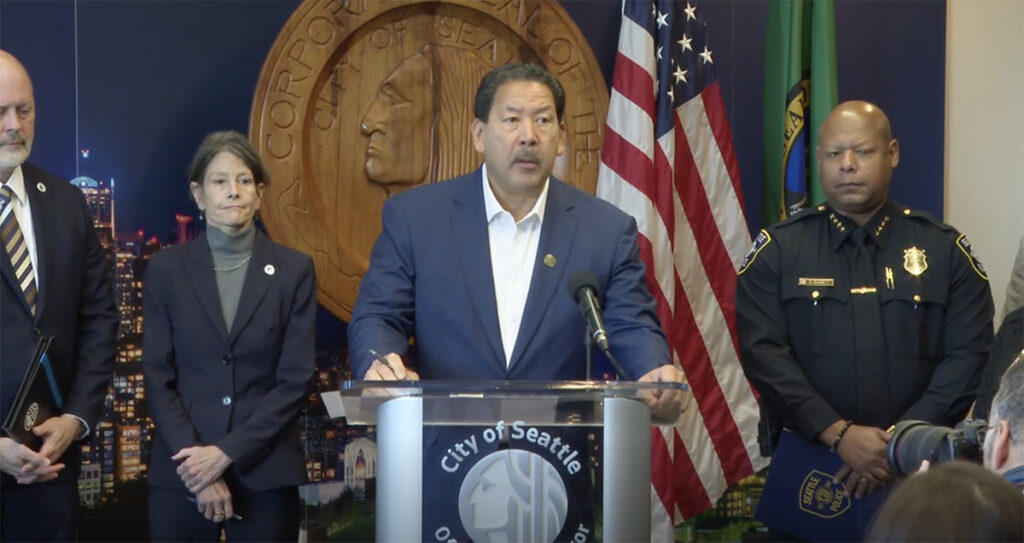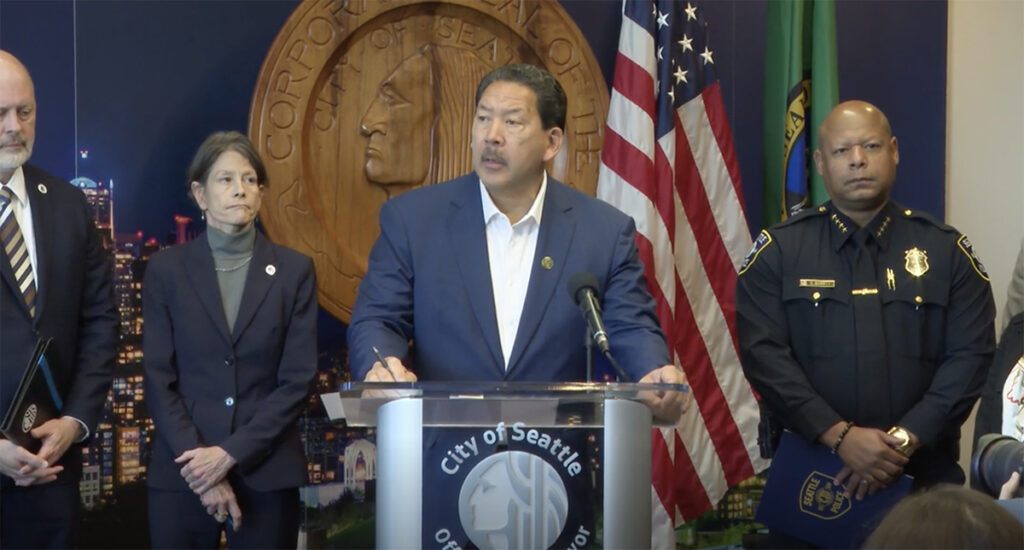By Carolyn Bick
NORTHWEST ASIAN WEEKLY

Launched as a pilot program in 2023, the CARE team consists of civilian crisis responders who staff the 9-1-1 Communications Center, where they dispatch emergency first responders, and the Community Crisis Responder team. They also answer Seattle’s non-emergency calls.
The tentative agreement with SPOG removes the CARE staffing cap, which was previously set at 24. The city aims to increase its CARE staff to 48.
“Now, as the responder team has grown in size and footprint, we’ve quite frankly just scratched the surface of what’s possible. These results are transformative,” Harrell said. “And while they’ve been addressing thousands of incidents in the last two years and over 5,000 incidents in 2025 alone, this agreement will allow care responders to respond to thousands more. The next phase of CARE as a permanent, co-equal public safety department is the vision we’ve been working for since day one of our administration.”
SPD Chief Amy Barden, who heads the CARE team, said that the primary goal in establishing the team was to provide help to people who may not necessarily need police services, but who did need help. She said that the most common calls are for welfare checks, downed persons, people in crisis, domestic violence calls, and calls regarding a suicidal person.
She said that over the past two years, CARE responders have only asked for police support 15 times, representing less than 0.05% of all calls in that time. She said that as the CARE team scales up to double what it was originally capped at, she believes there will be fewer referrals to the emergency department, fewer jail bookings, and more service intakes. She also said overall service will be faster.
“The CARE average response time to a call to date is still 13 minutes, and I know how much it’s going to mean to our community to be able to call 911, describe a neighbor who really needs help and does not pose a public safety threat, and have responders there in 10 minutes,” Barden said. “Our neighbors calling deserve that kind of urgency, and our neighbors languishing on the street deserve that kind of urgency.”
In the course of describing the kind of care people would receive, Barden mentioned “coercive care,” which applies to things like involuntary hospitalization and forced treatment.
“Nationally,” she commented, “there’s a really interesting conversation going on about how long you try to engage before interacting with somebody in a coercive way because sometimes that can be life-saving.”
While Barden didn’t address this further, a member of the media asked about when the CARE team would consider coercive care appropriate. She said that the CARE team does not handle long-term case management, and that staff will hand off a person to the appropriate service, such as emergency housing or a behavioral health center. But this doesn’t mean that this referral will always meet a person’s needs, she said.
“We hope that we made the correct referral, but very often law enforcement will encounter the same person again tomorrow,” Barden said. This is why, she said, that police and fire co-responders “are such close allies … I should be able to know in my software if … the person’s doing worse in six months, we got it wrong. It’s not working. We needed to try something else.”

He also said that the tentative agreement creates “a streamlined process for supervisors to address minor performance and misconduct issues in a consistent way and to discipline when appropriate.” These minor misconduct issues involve things like being chronically late to work, or parking in the wrong zone, which Chief of Staff Andrew Myerberg—former head of the OPA—said is a common community complaint.
The tentative agreement also allows the OPA to assign civilian investigators as co-leads on any investigation where an officer may be fired.
Finally, the tentative agreement also updates officer pay and benefits to keep Seattle competitive with other police departments on the West Coast. In response to a question regarding the raises police officers will be getting, Myerberg clarified that no new money would need to be added to the proposed budget, because the budget already presumed the cost of contracts.

